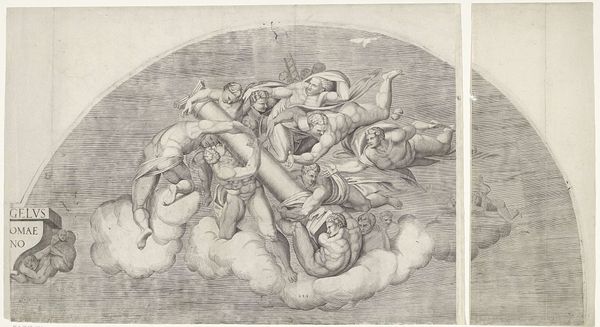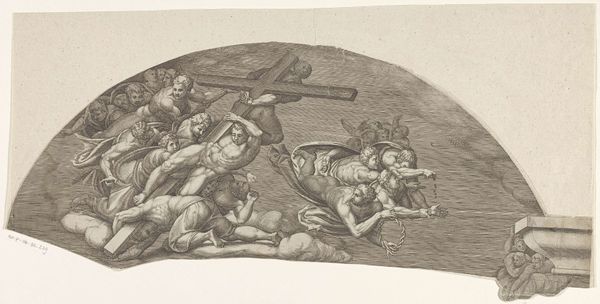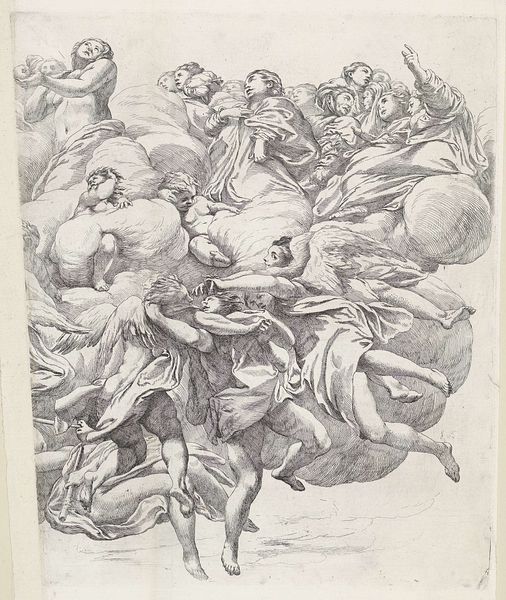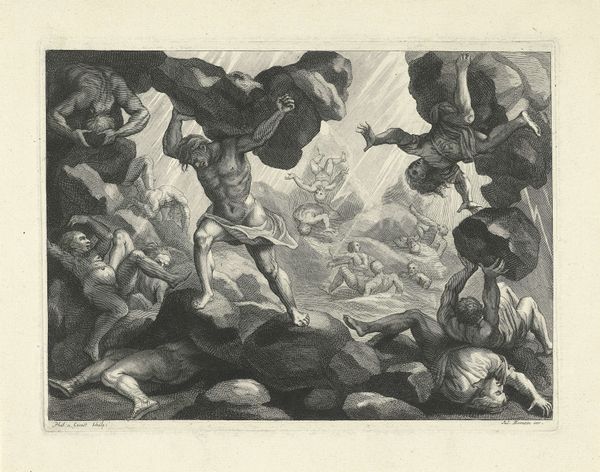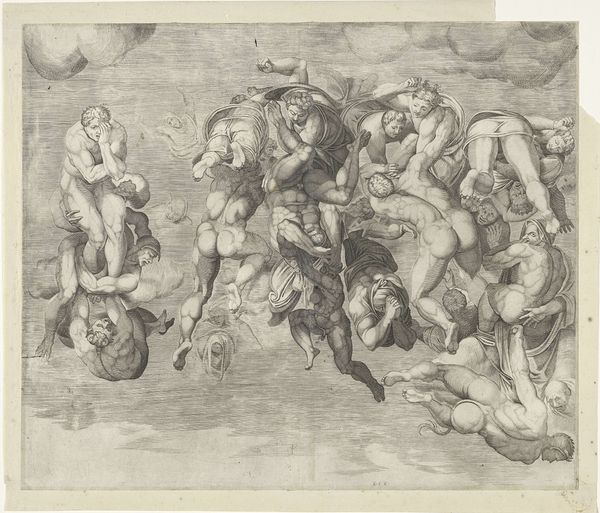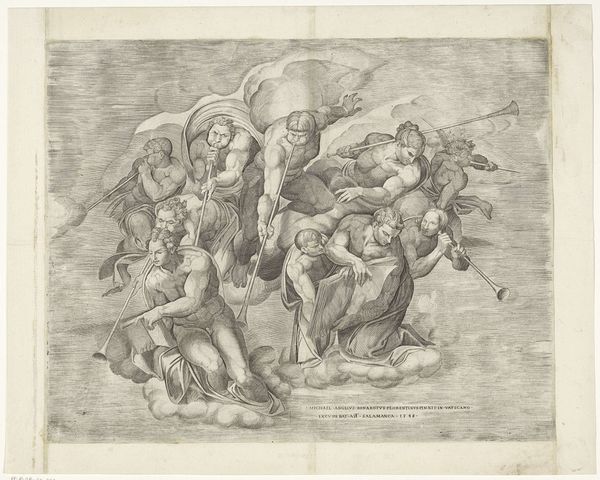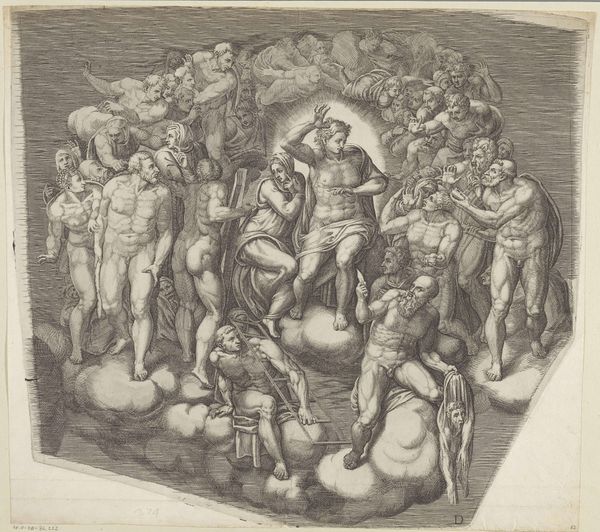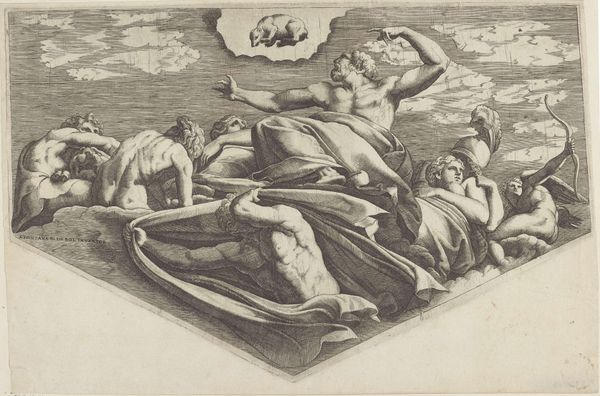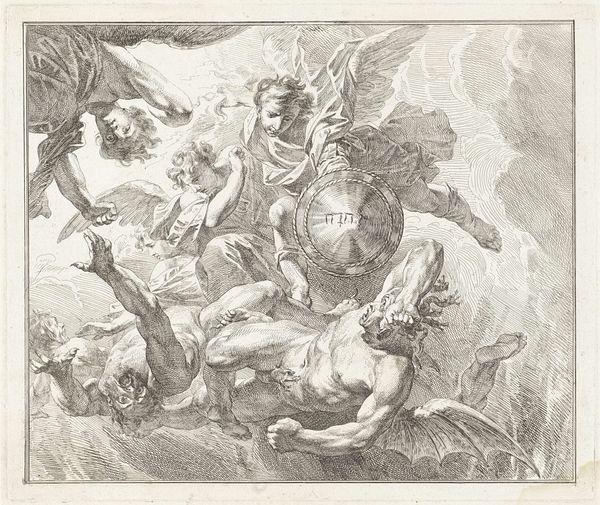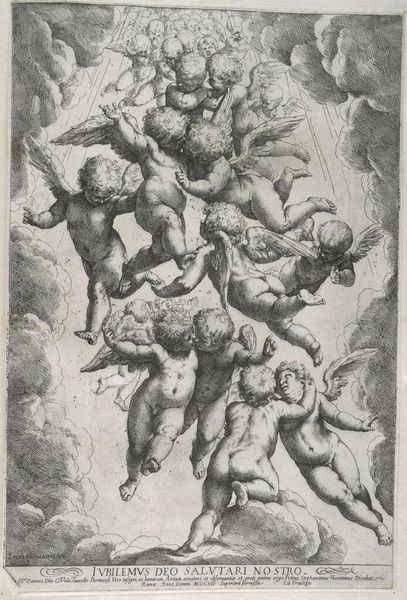
drawing, print, engraving
#
drawing
# print
#
mannerism
#
figuration
#
line
#
history-painting
#
engraving
Dimensions: height 233 mm, width 525 mm
Copyright: Rijks Museum: Open Domain
Editor: Here we have Giorgio Ghisi’s “Het laatste oordeel, blad A,” or “The Last Judgement, Sheet A,” an engraving, drawing, and print piece dating from around 1530 to 1582. The sheer number of figures crammed into this fan shape is kind of overwhelming! What can you tell me about its composition? Curator: It is essential to examine the Mannerist style employed here. Note the dynamic contrapposto of the figures, their exaggerated musculature, and the generally restless composition. Does this not seem purposefully designed to create tension and visual drama through distortion and artifice? Editor: Yes, definitely. I see how the bodies are sort of spiraling upwards toward the center. Is there a theoretical underpinning for choosing to display the body this way? Curator: Precisely. Observe how the artist manipulates the lines and forms to direct the viewer's eye, and how the interplay of light and shadow creates depth and volume. Consider, too, the implied movement and energy within the composition. To what extent do these formal elements convey meaning beyond the surface level? Editor: I suppose it steers us away from the literal subject of a "Last Judgement," focusing instead on how dramatic rendering and visual devices create a feeling. Curator: Precisely! Notice also the artist's skillful use of line to define forms and textures. The very act of transforming theological subject matter into formal problems of composition reflects Ghisi's deep intellectual engagement with Renaissance aesthetics. We find then the artist has translated the spiritual in terms of line and composition. Editor: This gives me a new appreciation for the visual architecture and deliberate style decisions beyond subject matter. Curator: Indeed, by carefully analyzing these formal aspects, we gain a richer understanding of the artist's intent and the deeper meanings embedded within the work.
Comments
No comments
Be the first to comment and join the conversation on the ultimate creative platform.
